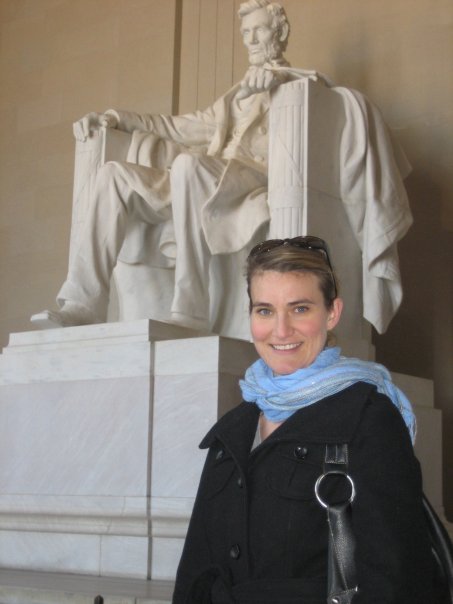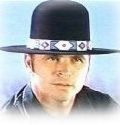 For their annual “Feast of Ideas” session, December 9, 2009, the Bay Area’s Cultural Connections experimented with a new format. Traditionally the December meeting is more social than other programs, focusing on gathering and exchanging information from many participants rather than a single speaker or topic. This was the case this year as well.
For their annual “Feast of Ideas” session, December 9, 2009, the Bay Area’s Cultural Connections experimented with a new format. Traditionally the December meeting is more social than other programs, focusing on gathering and exchanging information from many participants rather than a single speaker or topic. This was the case this year as well.
The broad theme was Technology and Inspiration in the museum world and there were five speakers. The format was the fast-paced “PechaKucha,” which allows each presenter just 20 seconds per slide, and a maximum of 20 slides each. This was a big experiment - neither the participants nor Cultural Connections had ever done this before, and the audience was the great beneficiary of their bravery. Though there are some kinks to be worked out, I think this is a good model for future programs.
The five speakers, all doing creative and innovative work with internet technology, included: Sorel Denholtz, Social Media Marketing, California Academy of Sciences; Perian Sully, Collection Information Manager and Web Programs Strategist, Judah L. Magnes Museum; Jordan Klineman, President, Virtual Gallerie; James G. Leventhal, Director of Development and Marketing, Judah L. Magnes Museum and Mandy Smith, who presented Antenna Audio’s Create Your Own Audio Tour Contest.
Speaking rapidly as she fired off her slides, Sorrel Denholtz gave us a quick rundown on the rapidly evolving world of social media, and described how the California Academy of Sciences is modifying their web site to become more interactive with, first their members, and eventually the general public. Their web site has evolved from a brochure about the institution to something much more engaging.
For starters, the Academy currently invites visitors to post photos of their visit on Flickr in an effort to foster community beyond the museum visit. Then there’s Live on Line, Scientists’ Spotlight, where members can ask questions of Academy scientists. To prevent the scientist from being overwhelmed by a huge numbers of questions, members vote to rank the questions, and only the top-ranked questions are submitted. The scientist then responds on-line, extending a dialog about science beyond the four walls of the institution. Members also get to share their suggestions about future exhibits at the Academy in an on-line discussion which, according to Sorrel, results in conversations that are both lively and profound.
In her general remarks, Sorrel touted the importance of Facebook Connect, now a year old. This service lets users log in to third-party sites with their Facebook credentials and bring their social identity with them. (In the meantime museum professional can join the very active Western Museums Association (WMA) Facebook page to keep up with what regional professionals are doing.)
Mandy Smith presented Antenna’s “Create your own Audio Tour” contest in which 13 different museums submitted audio that they created in house, with no professional assistance. The presentation included snippets of each museum’s self-produced audio, and highlighted the winner: Harbor History Museum in Gig Harbor, Washington. Their prize included 15 brand new XP-classic™ MP3 players Headsets, a 15-unit charging rack, a 12-month license for Antenna Audio’s XP-classic Updater™ software, access to the Omnimusic Library with 1-year license and a 1-year warranty on equipment. This is an annual event that Antenna publicizes on its web site, as well as on Twitter. Bits of the winning audio can be heard on Antenna’s web site as well.
Perian Sully has the awesome title of “Web Mistress” at the Magnes Museum. She has taken up the challenge of “creating a sense of wonder” around the museum’s collections through social networking. Perian began by introducing us to several different institutions that are successfully engaging visitors and would-be visitors around the world in conversations about museum collections. Art Babble is a video sharing site that, according to its website “…is intended to showcase video art content in high quality format from a variety of sources and perspectives.” The Bancroft Library at UC Berkeley highlights one object per day through a Twitter feed. The object is thematically tied to the day it’s featured. For example, on December 11th the object was a survey of El Rancho del Rinconada in Santa Clara County, filed with the state of California on December 11, 1860.
At the Magnes, Perian has, among other things, posted digitized versions of vintage Rosh Hashanah postcards from the Magnes collection. People can comment and converse about the cards, and also send digitized versions of the postcards to their friends and family.
Jordan Klineman demonstrated his proprietary Virtual Gallerie software that allows museums to create virtual, 3-D exhibits. This software can be used as a design tool before the construction and installation of an actual exhibit. It can also be used by museum goers to visit an exhibit that is no longer extant (an “artchive.”) The Los Angeles County Museum of Art is currently experimenting with Virtual Gallerie. Museum visitors can check out a PDA, at no charge, before visiting the collections. While browsing through the galleries they use the PDA to call up information about different artworks, and/or bookmark works of art they like, saving them to a customized account created automatically when they check out the PDA. Then when they get home, they can log on to lacma.org and enter their own three-dimensional virtual gallery, already stocked with the artworks they’ve selected.
James G. Leventhal presentation was about the “poetry of process” or “the beauty of bureaucracy,” which touched on technology as a constant innovation cycle. Even if a person manages to get technology into the work cycle of an organization, the work involved in pushing that innovation through the system is never over. And, once that innovation has been adopted by the institution, it’s no longer innovative. Due to the nature of technology, something new is already emerging.
The highlight of James’ presentation was in fact how he dealt with a failure of technology: some of the graphics in his slides refused to load, so he stood in front of the glare of the slide projector and made huge windmill circles with his arms, demonstrating with great dynamism the innovation cycle. As soon as you think you’re finished, it’s time to start over again.
What was refreshing about the PechaKucha presentation format was that the speakers had to be brief and focused. The slides were for the most part visually interesting and engaging. And the things left unsaid became fodder for the question/answer session that followed. Prompted by specific questions from the audience, speakers elaborated in more detail on a particular point, like how to demystify technologically-phobic staff of the importance of Web 2.0 while simultaneously convincing them that it’s not a 40-hour per week job.
It would be great to see more of this PechaKucha format, with an emphasis on creating time and space for conversation among presenters and audience members. PechaKucha can serve up rich fodder for social networking in real time and space, conversations which no doubt will continue in the virtual world.












Comments
Wow, I agree--I love the sound of that session format! Thank you for sharing! What I especially appreciate about it is that it means you can have many speakers at one meeting, but not taking up very much time and leaving more time for the rousing discussion/q&a that I'm sure ensued! It's almost like the Twitter version of conference sessions!
What's refreshing for me is the need to focus on what is really important. As long as speakers are thoughful and selective (which these definately seem to have been), this format can help us hone right in on what is significant. No need to drone on with details that are available on other ways to those who want/need them.
Add new comment